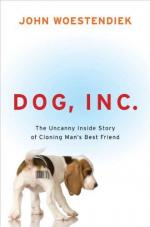|
This section contains 716 words (approx. 3 pages at 300 words per page) |

|
The phenomenon of identical twins has always attracted attention. After an egg is fertilized, it begins to divide repeatedly. If the egg completely separates during the two-cell stage, identical twins will result. Both individuals will have exactly the same combination of genes (genotype) and each will have the same physical characteristics (phenotype). This is an example of how exact duplicates can naturally occur through sexual reproduction.
A clone is a group of genetically identical cells descended from a single common ancestor. Science has capitalized on the mechanisms of cellular reproduction to produce clones. Advances in biotechnology since the 1970s have enabled livestock breeders to clone virtually unlimited numbers of identical animals from a single embryo, allowing the precise duplication of an animal with desired characteristics.
In 1979, veterinarian Steen Willadsen developed a way to divide sheep embryos in half at the two-cell stage, making clones possible. In the next...
|
This section contains 716 words (approx. 3 pages at 300 words per page) |

|


